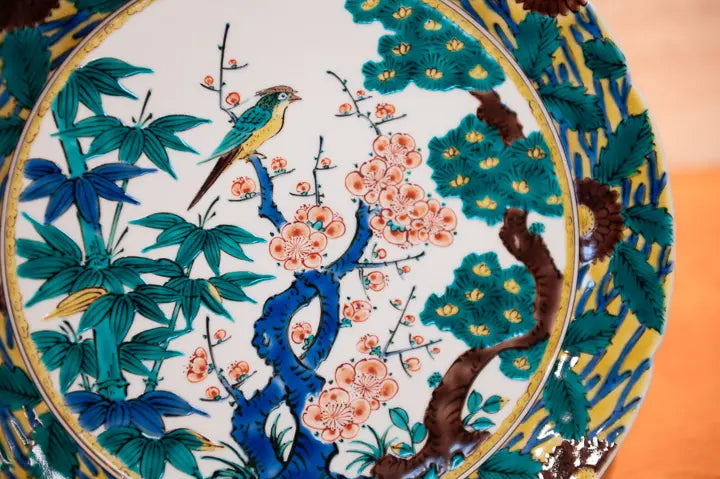Kutani ware is a traditional Japanese ceramic produced in the Kaga region of Ishikawa Prefecture.
◼️History
Early period (ca. 1655 - ca. 1730):
The origins of Kutani ware date back to the early Edo period. Under the control of the Daishoji clan, a branch of the Kaga clan, a kiln was opened in Kutani village (present-day Kaga City, Ishikawa Prefecture).
Kutani ware is characterized by colorful overglaze painting and bold designs and is called "Kokutani". Early Kutani ware was mainly made for daily use and tea ceremony.
Middle period (ca. 1730 - ca. 1820):
The production of "Kokutani" stopped for a while, but was later revived. This period is also called "Blue Kutani", and a unique blue glaze was used.
Late period (around 1820 - present):
In the 19th century, the production of Kutani ware became popular again. Many kilns were established, especially in Kanazawa City. During the Meiji period, Kutani ware was exhibited at international expositions such as the Paris World's Fair and was highly praised overseas. Even today, works are being made that incorporate new designs and techniques while preserving traditional techniques
◼️Characteristics
Five colors:
Kutani ware is characterized by the use of five colors called "five colors": red, blue (green), yellow, purple and deep blue. This allows for an extremely vivid use of color.
Painting:
It is characterized by detailed and beautiful painting. Traditional designs include flowers and birds, landscapes, and people.
Overglaze painting:
Overglaze painting is a technique in which an image is painted on top of the bisque and then fired again. This technique allows the image to be expressed clearly and vividly.
Unique texture:
Kutani ware has a unique texture due to the thickness of the glaze, depth of color and precision of painting.Kutani ware is highly regarded at home and abroad for its beauty and traditional techniques.Kutani ware plates are made for various purposes such as tableware, flower vases, and decorative items.



